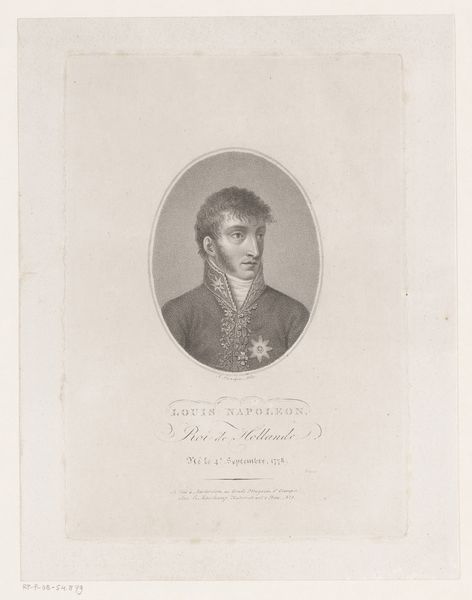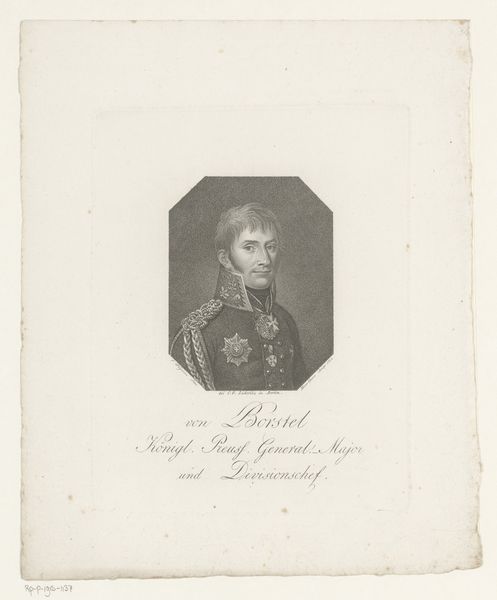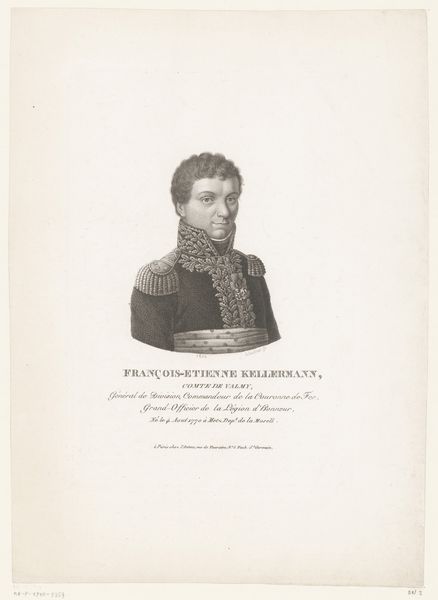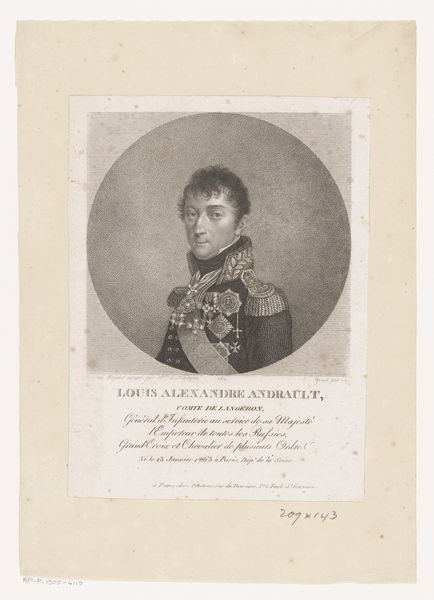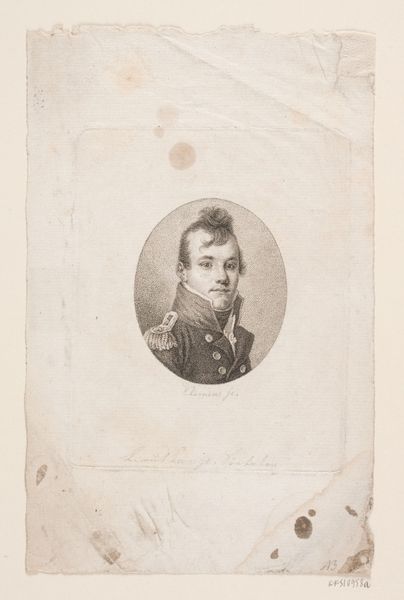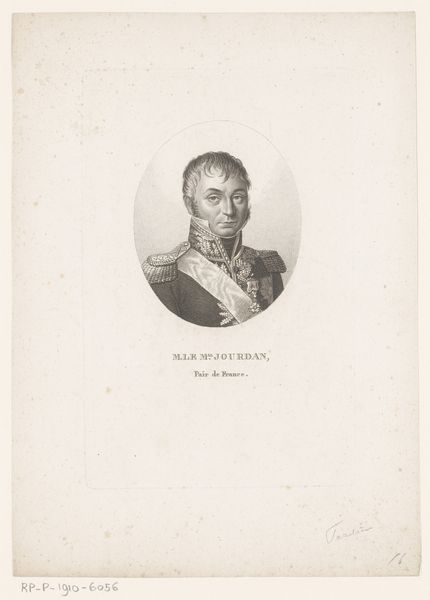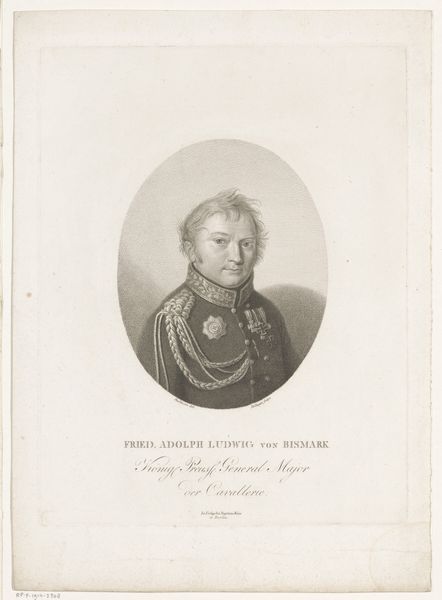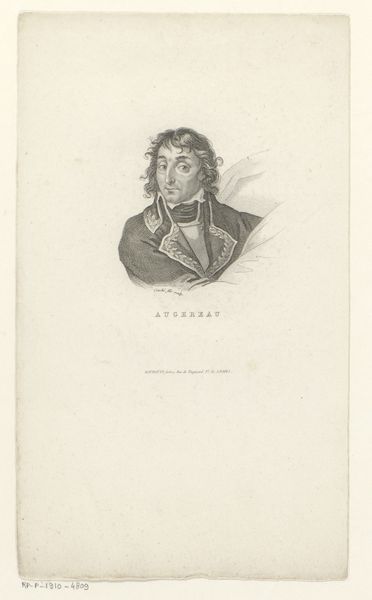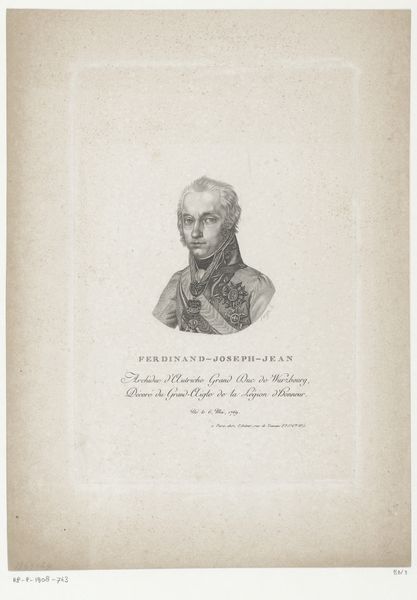
print, engraving
#
portrait
#
neoclacissism
# print
#
old engraving style
#
romanticism
#
history-painting
#
engraving
Dimensions: height 298 mm, width 217 mm
Copyright: Rijks Museum: Open Domain
This portrait of Ludwig von Borstell was made by Johann Friedrich August Clar, and is rendered with meticulous detail on paper using engraving techniques. The process starts with a metal plate, where the artist incises the design. The depth and density of these lines determine the tonal range of the print; ink is then applied and the surface wiped clean, leaving ink only in the incised lines. The print emerges when paper and plate are pressed together. Here, the precision of the engraved lines captures the texture of Borstell's uniform, the glint of his medals, and the character of his face. Engraving was crucial for disseminating images, functioning as a kind of printing press before photography. This portrait would have circulated widely, reinforcing Borstell’s status as a Prussian General Major. The labor-intensive nature of engraving adds a layer of value, connecting the image to the skilled craftsmanship required for its production. Considering the materials, process, and social context allows us to appreciate the complex interplay of art, craft, and the reproduction of power in this historical portrait.
Comments
No comments
Be the first to comment and join the conversation on the ultimate creative platform.

